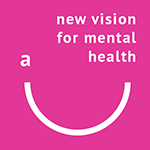Prof. Stephen Joseph argues – in this extract from The Handbook of Person-Centred Therapy and Mental Health (Theory, Research and Practice), edited by Stephen and published by PCCS Books – that person-centred theory provides a robust framework for understanding and working with severe mental distress (our emphasis):
“Over recent decades, the person-centred approach has become a major force in the world of counselling and psychotherapy. Yet the person-centred approach to understanding distress and dysfunction has commonly been overlooked in mainstream mental health services. This is, perhaps, due to the mistaken belief among many psychologists and psychiatrists that person-centred therapy is a good idea for the ‘worried well’, but that serious mental health problems should be left to the ‘proper professionals’. This becomes, of course, a self-fulfilling prophecy. As the person-centred approach becomes marginalised in the NHS because of these beliefs, training courses find it hard to provide placements and supervision for trainees to work with clients with more severe forms of mental distress, and so person-centred practitioners emerge from their training ill-equipped to work with anyone but the worried well, at least in the eyes of these other professionals.
Clash of paradigms
But a deeper look at the theory that underlies person-centred practice shows it does have great potential for helping people who would otherwise be considered to have serious mental health problems. The main problem is communication, as we are essentially dealing with a clash of paradigms: the potentiality model of the person-centred approach on the one hand, and the medical model on the other.
The person-centred approach to helping is based on the assumption that human beings have an inherent tendency towards growth and development: movement towards becoming fully functioning will happen automatically when people encounter an empathic, genuine and unconditional relationship in which they feel valued and understood. However, it is recognised that such relationships are rare; the inherent tendency towards becoming fully functioning is more frequently thwarted and usurped, leading instead to psychological distress and dysfunction.
For the person-centred therapist, the power and direction for change comes from within the client; their task is solely to provide the new relationship that allows the person to flourish.
The medical model is based on the assumption that there exist specific disorders requiring specific treatments (our emphasis) – an assumption embodied in the Diagnostic and Statistical Manual of Mental Disorders (DSM), now in its fifth edition. DSM-5 is a voluminous work, running to many hundreds of pages, which describes the range of psychiatric disorders and the detailed procedure for the diagnosis of each …”
Read more from page 28 onwards of the May 2017 edition of Therapy Today.




